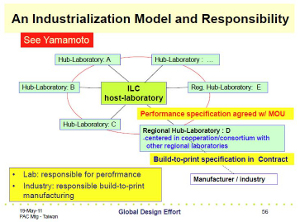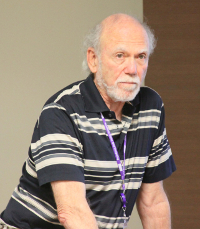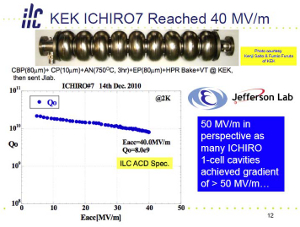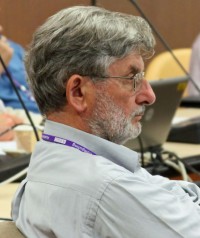The ILC Program Advisory Committee (PAC) held their semi-annual review of the ILC detector and accelerator programmes at Academia Sinica in Taipei, Taiwan from 19-20 May and made a set of specific recommendations regarding the GDE accelerator R&D programme towards a Technical Design Report (TDR). Overall, the review was quite positive and supportive of our achievements and progress. They agree that we are on track to produce a TDR based on our solid R&D programme. The PAC report contains six specific recommendations regarding the ILC accelerator programme and I briefly address each of those below.
1. The PAC believes that a primary current responsibility of the GDE is to keep costs under control through the TDR phase.
Cost containment has been the central theme of our work since completing the Reference Design Report (RDR). We recognise from the RDR costing that the ILC will have comparable costs to the LHC and ITER and therefore we need to pay special care to cost containment as we move forward. The highest priority in establishing a new baseline for the TDR has been to find areas of cost savings that can compensate for other areas where there will inevitably be cost growth. Now that a new baseline is established, we are beginning to a new costing study and we intend to make every effort to “keep costs under control” as we develop the TDR.
2. The Committee strongly favors the cryomodule production model where industry builds to print and HEP lab(s) take responsibility for meeting performance specifications.

Model for cost-effective cryomodule production, as proposed by Akira Yamamoto, GDE project manager for superconducting radiofrequency research
This is precisely the scheme we presented to the PAC. To do mass production of cavities and cryomodules cost-effectively, we need to minimise the risks for industry and use them for what they do best, manufacture to specifications.
3. The PAC is very encouraged by the progress that has been achieved so far towards reaching the cavity gradient goals.
At the previous PAC meeting last autumn, we reported that we had achieved the 2010 milestone of 35 megavolts per metre (MV/m) with more than 50% yield. Rongli Geng of Jefferson Lab presented our progress on cavity gradients at the May PAC review and showed that our goal of 90% yield at 35 MV/m for the TDR is within reach. He also concluded that an average gradient of 38-39 MV/m is also reachable. He reported that the ILC cavity global database now contains results from all three regions. He also reported progress on reducing field emission. Finally, he discussed considerations for continued R&D after the TDR, including some progress on alternative cavity shapes and some suggested efforts at hydroforming and mechanical polishing. He outlined global planning needed to embark on a serious high-gradient ILC 1-TeV programme.
4. The problems which arose during the recent first S1-Global test are a cause for concern, and the Committee supports a careful disassembly of the equipment followed by a report on the findings.
Hitoshi Hayano (KEK) presented the results of the S1-Global test, which in addition to being a test of ILC prototype cryomodules, provides a significant test of ‘plug compatibility,’ a concept we are following to integrate components made in different laboratories. He pointed out a series of problems that have been identified in this test, including that a couple cavities degraded upon being put into S1-Global. One coupler degraded, two tuners did not work and one piezo had discharge problems. Although we accept the concern of the committee, we believe most of these problems are more of a reflection of a learning process than representing fundamental issues.
5. The progress made in the studies at the FLASH, CesrTA and ATF2 test facilities is impressive, and the Committee strongly supports continuation of this work.
Along with the superconducting radiofrequency (SCRF) R&D, the core of our programme are the experiments on FLASH, demonstrating our operating conditions for SCRF with beam; the CesrTA programme, demonstrating the viability and specific mitigation schemes in the ILC damping rings; and ATF2 final focus demonstrations. We are particularly encouraged by the rapid recovery of ATF2 from the Japanese earthquake, even since the PAC review.
6. The PAC strongly supports the KEK pilot plant project for cavity production.
The present scheme at KEK is to build an industrial technology development centre (i.e., Pilot Plant) for the R&D stage that could be extendable for further R&D beyond the technical design phase and eventually become a potential ‘mother plant’ in the production phase with a capacity of roughly 150 cavities per year.
Overall, this PAC review covered a lot of territory, including reviewing the new ILC baseline that will be the basis of the technical design, reviewing of our SCRF status, progress and plans for industrialisation, reviewing of our major R&D programmes and even having discussions of what programme should follow once the TDR is complete. It was a very constructive review, where the committee made both useful suggestions and was generally quite supportive of our progress and plans toward a Technical Design Report at the end of 2012.






Recent Comments